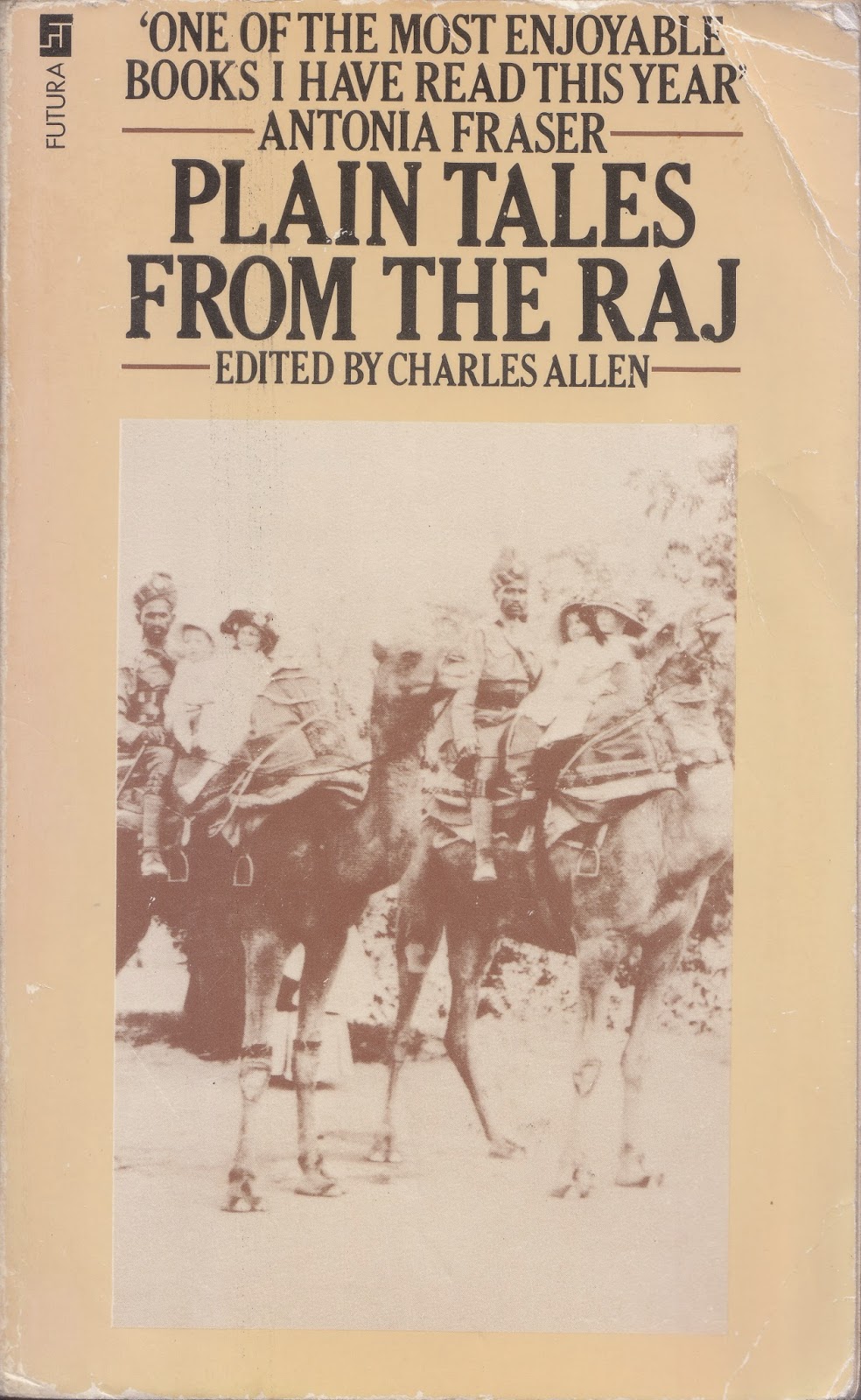Stories from the British Raj
Plain
Tales from the Raj
I enjoy
reading of the times gone by and am often left wondering how it would have been
to be part of society then at various locations. The pace of life, openness of
the places described, people interacting with rivers and forests, all fascinate
me. Plain Tales from the Raj does this; it takes me to those times.
The
book contains stories of coming to a ‘different’ and far-away land, living,
adopting lifestyles and thriving in a land where language and culture are
alien. Of separation and affairs. Of moving en-masse to the hills in summers. Of
solitary and lonely lives. Of same set of activities each day. Of colourful evenings
in clubs. Of becoming district magistrates at (age of) twenty-one and commanding absolute authority over huge
areas; some believing, like Churchill, of their belonging to a superior race. It
has repeated references to Rudyard Kipling’s work. I had read Kipling including
his vivid description of life in Shimla, albeit a while ago, but had no idea
either of the extent of his popularity or the impact he had.
The
stress on customary practices and official protocols are an eye opener to those
times and left me wondering on how much of these we have imbibed in our lives.
Like our NRIs are believed to be investing more time and efforts for ceremonial
activities today, be it festivals or marriages (and such events), the British in India - then - continued many
practices and traditions (in India)
long after they were passé in Britain. There are also pages that talk of remote
regions like the North West Frontier Province and the harsh lives there. And
those which define Anglo Indians and mention how they were caught between the British
and Indians.
This
is one of the rare books - in what little I have read – that talks about the
lower rungs of the British society; the British troops in India then. What they
did during the day, how they travelled from Britain to India! And their lives
were anything but great. This I had missed in the classical European short
stories as well, and recall wondering how do the people who cook and clean for
the principal characters, go on with their lives! That said it primarily is
about the privileged classes and their lives – from top notch academy in
Britain to having a small army of servants and helpers at their command. About
how the hierarchies, which they practiced, were as rigid and discriminatory as our
caste system.
Some
points are striking. Like that of the importance ascribed to learning local
languages – how they invested the initial year to learn Urdu, if they were
posted in the United Provinces. This hits me in the face - as someone bad with
languages and who, working on wildlife conservation, believes that it is
pertinent to interact with people if we are to conserve wildlife in India. The
descriptions of beggars and street dogs had me made recall the line - the more
things change, the more they remain same. Some lines remind of other books.
There is reference to the Palace of the Burmese King on our western coast and
of course one immediately recalls Amitav Ghosh’s The Glass Palace. As I read of
the cantonment towns one I was anxious to come across the opium factories that
Amitav Ghosh has so vividly described (I
recalling feeling as if I was walking through them) in his Sea of Poppies.
But alas, no mention.
At
the end these are the tales of a few thousand ruling over few crores – possibly
the most underrated of enigmas!
Trains
had such a role in lives then, given my fascination for them share some lines
on trains from the book:
Usually
you had a whole carriage to yourself, a first class carriage with four bunks
in, two up, two down. You’d have a tin bath in the centre of the floor with a
great big block of ice which used to be renewed at the stations, and there
would be two small fans that used to blow down on the ice and keep you really
very, very cool. We loved these journeys.
The
Indian Railways was a part of the social fabric of India. At night every
platform was a mass of sleeping forms wrapped in cloth, always, heads covered
with feet sticking out, over which passengers changing trains had to pick their
way. . . . There were also the station vendors and sweetmeat sellers with their
hawkers’ cries that quickly became familiar to the travelers: Hindi paani,
mussulman paani, from the water carriers who sold water to Hindus and Moslems
separately . . . .
.
. . . the extremes of Calcutta began at Howrah Railway Station, which was
smothered with human forms all in very primitive attire, sitting and standing
and wandering about, some eating, some cooking and some just sleeping. Outside
there was Howrah Bridge, a mass of moving humanity and merchandise jolting over
the humps where the pontoon sections joined together, in bullock carts, buffalo
carts, rickshaws, gharries, taxis, buses and private cars, quite apart from the
hundreds of pedestrians on either side . . . .


Comments
Post a Comment